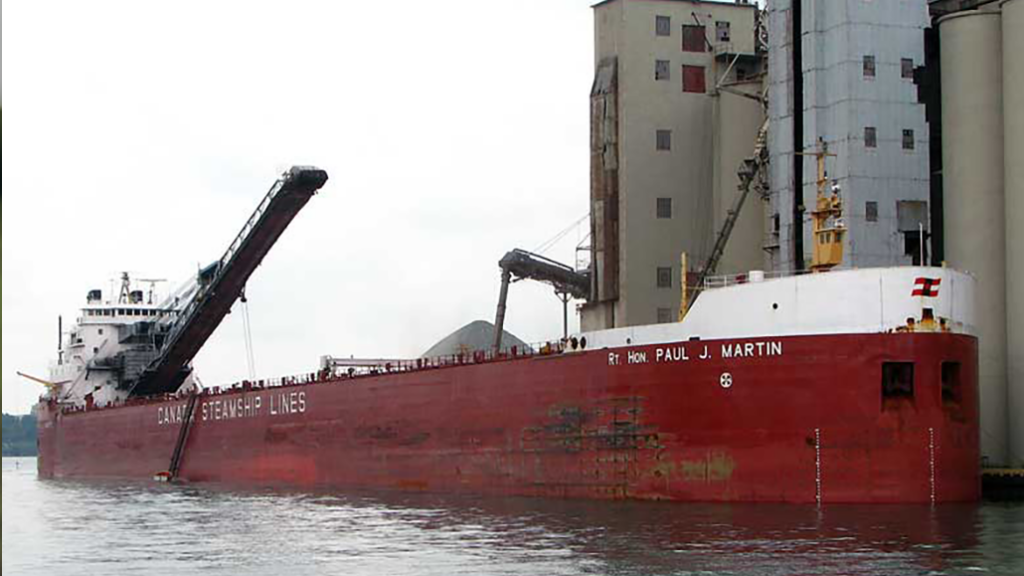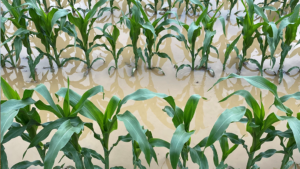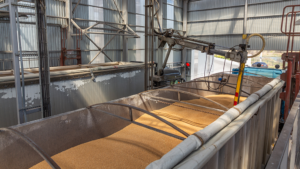European trade policies
IMPACT ON ONTARIO GRAIN EXPORTS YET TO BE SEEN

the past 20 years have seen their share of disputes among technology users, countries, and trading partners involving various innovations, from transgenics to active ingredients in chemical products, often with corresponding trade issues. The disputes might trigger a resolution through the terms of a trade pact or generate uncertainty as to whether regulatory assessments in one jurisdiction meet with the approval of another.
Earlier in 2023, two pieces of legislation were introduced by the European Union (EU), one dealing with maximum residue limits (MRLs) of two insecticidal products and the other with applications of new genomic techniques (NGTs). The MRL regulations, published on February 15, address the use of clothianidin and thiamethoxam, two neonicotinoids (neonics) used in Canada primarily as seed treatments and foliar-applied products. The regulations go into effect on March 7, 2026, giving food companies and trading partners time to adopt the guidelines.
The regulations for NGTs were published on July 5. However, there is still a review period, which could take 18 to 24 months.
How these rules will unfold for the EU, its member countries, and their respective agri-food sectors remains to be seen. Yet the concerns for Canadian growers can be divided into separate channels: the continued use of crop protection products and the long-term determination of NGTs and how those may be regulated in the future. Of the two, the MRL legislation is the more immediate concern for Ontario corn and soybean growers. The rules governing NGTs –including genome editing — are more like moving targets for future consideration.
OUR REPUTATION ABROAD
For years, Canada has been acknowledged for having one of — if not the — most stringent regulatory systems in the world, including the use of crop protection products. But another jurisdiction trying to impose a directive that is not science- or risk-based and intended to curtail technology use in other areas should be questioned. Such restrictions could deter countries from making their own determinations on the use of any technology.
“Holistically, Ontario farmers are always concerned at the decisions being made around the world on our ability to grow crops to export and feed a growing population,” says Paul Hoekstra, vice president of strategic development with Grain Farmers of Ontario. “Regulatory decisions or policies that impact the ability to access technology to be both economically and environmentally sustainable is a chief concern among our farmers.”
Regarding the use of neonics, the EU regulations seek to use a food-based protocol like MRLs to impose more of an environmentally-based standard, not just on the European mainland but in other countries around the world. Some may view that as a means of setting guidelines for doing business with EU members. However, if the EU is allowed to misuse MRLs to determine which active ingredient can or cannot be used by non-EU farmers, it is unlikely this approach will be limited to neonics only and could instead result in added restrictions placed on the use of other chemistries, including glyphosate. These issues are emotionally charged, yet they are complex scientific discussions and discoveries, and a country has to ensure it is making the best decisions for the safety of the food its people are consuming.
“We’re seeing a divergence between how the EU has made its regulatory decisions,” says Hoekstra. “In the EU, for example, pollinator assessments are incredibly conservative — based on overly protective models and assumptions. That versus how Health Canada has looked at the data in conjunction with the U.S. Environmental Protection Agency (EPA) and made a different type of framework and how it evaluates risk to pollinators in a more pragmatic but still protective manner.”
ADVOCATES NEEDED
Unfortunately, the narrative on such issues can take on a life of its own. Mac Ross, vice president of trade policy and crop protection for the Canada Grains Council, believes this country’s efforts in disseminating the EU’s policy on MRLs could be helped by scientists responsible for evaluations and approvals. But on a global scale, some sort of critical mass of alignment among Canada’s trading partners would also be a step in the right direction.
“People probably need to be told about the importance of innovation in agriculture because not everybody gets it,” says Ross. “Sometimes it feels like we can have 50 talented people on our side, and all their progress can be undone by two people on social media.”
Then there is the uncertainty surrounding the use of neonics and their alleged link to falling bee numbers: is bee health more adversely affected by varroa mites, colony collapse disorder, neonic seed treatments, or a combination of those factors? Yet Ross notes that MRLs only apply to products grown in one country and then crossing an ocean or what is in a truck heading to another country. Using MRLs to protect pollinator health — and then assuming other countries will follow suit — is not the proper use of that residue standard. It is the “gatekeeper” on what the maximum trace is that can be found on products being shipped across international borders.
“There may not be a direct risk or impact with the current proposal on neonic revocations,” he says. “But it’s the precedent that the EU would continue to take this approach on additional actives that are vital for Canadian growers. It’s really important to be looking at ways to push back on this.”
GLASS HALF FULL?
As far as the new genomic techniques (NGTs) legislation is concerned, there are several “annexes” to the proposed legislation, including the “criteria for equivalence of NGT plants to conventional plants.” According to the published report, “a(n) NGT plant is considered equivalent to conventional plants when it differs from the recipient/ parental plant by no more than 20 genetic modifications”. If there are more than 20 modifications, it is placed in a different category and assessed more like a transgenic plant — a genetically modified organism (GMO).
Yet, according to Pierre Petelle, there may be a silver lining to the proposed guidelines.
“Speaking to European grower groups, they’re quite encouraged by this because many of them expected a full rejection like with GMOs,” says Petelle, president and chief executive officer of CropLife Canada. “(Activists) were trying to catch these as ‘the new GMOs,’ and they pushed European governments to treat them the same as GMOs, and it looks like they’ve failed on that ideological approach.”
In the meantime, more than a dozen governments have published clear guidelines on how they are going to deal with these new breeding techniques, wondering if this will push the technology forward. Petelle believes Canada “got it right” 30 years ago with its legislation that said it is not about the technique; it is about the product that is created using the technique, better known as a novel trait.
“It doesn’t matter if you did that through traditional plant breeding, mutagenesis, gene-altering, or GMO,” he adds. “We’re more interested in the change you made. Is it significant enough? Does it affect your nutritional quality? Focus on the product. That has served us well because it shouldn’t matter whether you use traditional breeding or other techniques. It’s about product, and that’s what’s encouraging about the proposed EU approach.”
When the consultation period is complete and the final guidance is published, Canada will probably have the best model for predictability and clarity on how or what triggers a full review versus a partial or no review, compared to other jurisdictions in the world.
WHY IT MATTERS
Canada sells grain to more than 100 countries, so the way our trading partners regulate gene-edited plants matters. Tough rules in the EU, for example, could make it difficult for Ontario farmers to grow the most cutting-edge varieties and hybrids due to the risk of a trade disruption.
“The EU’s NGT legislation is a big improvement over its approach to GMOs, which can linger under review for 10 years or more,” says Krista Thomas, vice president of trade policy and seed innovation for Canada Grains Council. “Fortunately, this legislation confirms that gene-edited plants are not considered to be GMOs in the EU.”
In fact, the new NGT legislation indicates that “conventional-like” gene-edited plants can be approved in just a few months following a verification process. More complex gene-edited plants will follow a year-long process that includes some of the EU’s requirements for GMOs.
Many of the gene-edited plants being developed now will fall into the shorter “conventional-like” category, yet Thomas believes there is a need for some caution. Where Canada’s approach is “future-proof,” the EU’s is very specific as to the methods included.
“The EU has made strides forward, but we still have concerns, like the predictability of the time frames in the future,” she says. “We don’t know if there could be unforeseen delays when gene-edited plants are under review in the EU.” •









